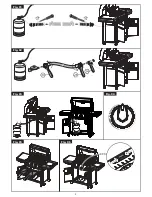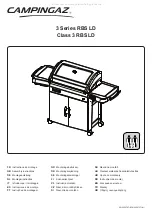
72
English
Cleaning enamelled grates
•
Cast objects
are not dishwasher-safe.
• Always allow to cool down before cleaning. Never immerse hot cast objects in cold water as a thermal
shock could damage the enamel and the casting.
• Soak burnt leftovers in hot water and gently clean all surfaces in a prompt manner. Do not use any
steel wool, steel brush or abrasives. You would remove the enamel layer and the patina created from
the "burning-in" stage.
• Then rinse cast objects thoroughly in clean water.
• Always dry thoroughly after cleaning and never store cast objects when wet.
• After cleaning rub a small amount of neutral heat-resistant cooking oil or vegetable fat onto the cast
object – do not use olive oil!
• Wipe off excess fat using a cotton cloth.
Cleaningthefatdischargeplateandfatcatchertray
The fat discharge plate and the fat catcher tray must be cleaned on a regular basis! If the grill is used a
lot, more frequent cleaning may be required. Adapt your care plan according to usage. If they are not,
accumulated fat and oil could cause a fat fire in the grill.
Your guarantee does not cover damage caused by a fire started by fat and oil residues.
1. Remove the two lateral transport securing screws on the left and right.
2. Remove the fat discharge plate along with the fat catcher tray.
3. Remove the excess fat, clean the fat catcher tray and cooking compartment with warm soapy water
and rinse them with clear water.
4. Never line the cooking compartment and fat catcher tray with foil or sand.
Cleaningthemainburners
Especially after long periods of use, the burners can become clogged with excess fat, juices and marinades
and surface corrosion may set in.
1. Remove burners, see instructions below.
2. Clean burners with warm water and cleaning agent.
3. Make sure that the burner jets are clear.
4. Rinse burners with water, dry and insert again.
5. Light burners immediately to prevent rusting and corrosion.
6. Gently oil burners if the gas grill has not been used for an extended period.













































